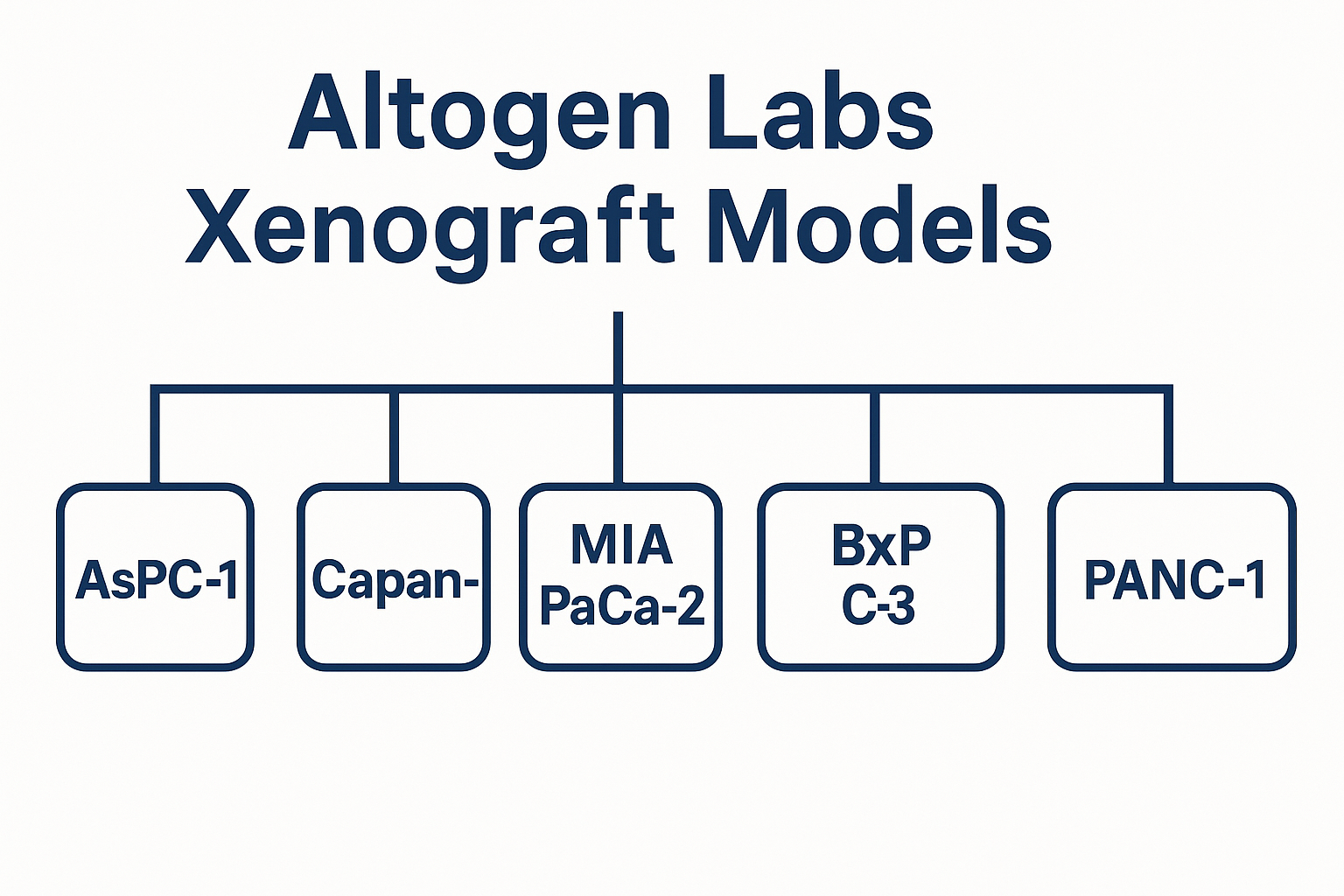Introduction to Pancreatic Cancer Xenografts
Pancreatic cancer remains one of the most aggressive and lethal malignancies, with a five-year survival rate lingering in the single digits. Its poor prognosis is largely attributed to late diagnosis, rapid metastatic spread, and resistance to conventional therapies. To better understand the biology of this disease and evaluate novel therapeutic strategies, pancreatic cancer xenografts have emerged as essential preclinical tools in oncology research.
Xenograft models involve the transplantation of human pancreatic cancer cells or tumor fragments into immunocompromised mice, providing a biologically relevant system that recapitulates many aspects of human tumor biology. These models preserve the complex architecture, molecular heterogeneity, and tumor microenvironment interactions that are often lost in in vitro studies. As such, xenografts bridge the translational gap between cell culture and clinical trials, offering a robust platform for evaluating tumor growth kinetics, metastatic behavior, drug responsiveness, and resistance mechanisms.
There are several types of pancreatic cancer xenograft models. Cell line-derived xenografts (CDX) are generated by implanting cultured pancreatic cancer cell lines such as MIA PaCa-2, PANC-1, BxPC-3, or AsPC-1 into immunodeficient mice. While these models are reproducible and easy to handle, they may lack the intratumoral complexity found in patient tumors. In contrast, patient-derived xenografts (PDX) use freshly resected tumor tissue from pancreatic cancer patients, allowing for the preservation of patient-specific histological and genetic features. PDX models have become the gold standard for studying tumor heterogeneity, personalized medicine approaches, and biomarker discovery.
Orthotopic xenografts, in which tumors are implanted directly into the pancreas of the host animal, further improve model fidelity by enabling the tumor to grow in its natural microenvironment. This approach supports the development of desmoplastic stroma, simulates metastatic spread, and more accurately reflects the pharmacokinetics of therapeutic agents. Orthotopic PDX models, in particular, represent one of the most clinically predictive platforms for drug efficacy testing in pancreatic cancer.
As the field of pancreatic cancer research advances, xenograft models continue to play a pivotal role in drug development pipelines, pathway interrogation, and the functional validation of genetic alterations. Coupled with high-efficiency in vivo transfection tools and gene editing technologies, these models empower researchers to conduct precise, mechanism-driven studies within a living system.
Pancreatic Cancer Xenograft Models
Altogen Labs specializes in in vivo xenograft services using well-characterized human pancreatic cancer cell lines. These models are essential for preclinical drug evaluation, biomarker validation, and therapeutic research. Established under strict GLP/IACUC standards, Altogen Labs delivers reliable, reproducible results tailored to your development needs.

Featured Xenograft Models
AsPC‑1 Xenograft Model
Cell Line: Derived from ascites of metastatic pancreatic adenocarcinoma.
Features: Highly tumorigenic, epithelial morphology; standard for metastasis and therapy testing.
Applications: Preclinical evaluation of chemotherapy, angiogenesis inhibitors, and immunotherapeutics.
Learn More: AsPC‑1 Xenograft Model
Capan‑1 Xenograft Model
Cell Line: Derived from a 40-year-old patient’s metastatic lesion.
Key Uses:
- Testing HER2/EGFR inhibitors (e.g., lapatinib) in combination therapies.
- Targeted alpha therapy and MUC‑1-targeting antibodies.
- Histological studies, including MUC‑4 and cancer-associated fibroblast expression.
Applications: Cancer biology, targeted therapy assessment, tumor microenvironment studies.
Learn More: Capan‑1 Xenograft Model
MIA PaCa‑2 Xenograft Model
Cell Line: A ductal adenocarcinoma model with both epithelial and neuroendocrine features.
Characteristics:
- Expresses cytokeratins, vimentin, synaptophysin, chromogranin A.
- Standard for chemo‑sensitivity and therapy combo testing in vivo.
Applications: Drug efficacy studies, tumor microenvironment, spheroid/drug delivery evaluation.
Learn More: MIA PaCa‑2 Xenograft Model
BxPC‑3 Xenograft Model
Cell Line: KRAS wild-type adenocarcinoma with moderate differentiation; high IL‑8, VEGF, PGE₂ expression.
Applications: Ideal for angiogenesis inhibitor testing, stem-cell marker studies, and standard drug screening.
Learn More: BxPC-3 Xenograft Model
PANC‑1 Xenograft Model
Cell Line: Poorly differentiated ductal adenocarcinoma with known genetic mutations (KRAS, TP53, CDKN2A).
Features:
- Epithelial cells with metastatic potential; doubling time ~52 hrs.
- Often used in studies on cell migration, cytoskeletal reorganization, and therapeutic resistance.
Applications: Tumor progression research, metastasis suppression, and molecular mechanism studies.
Learn More: PANC‑1 Xenograft Model
Why Altogen’s Xenograft Models?
- Proven Cell Line Performance – Validated in vivo models with genetic and phenotypic relevance.
- GLP & IACUC Compliant – Strict protocol and animal welfare standards.
- Full-Service Platform – Includes implantation, dosing, monitoring, histological and molecular readouts.
- Tailored for Your Study – Subcutaneous or orthotopic formats, single or combination therapy designs.
Learn More & Request a Quote
Explore individual model data or request customized services:
- Pancreatic Xenograft Models – Altogen Labs
- Request a Custom Quote for your selected model(s)
